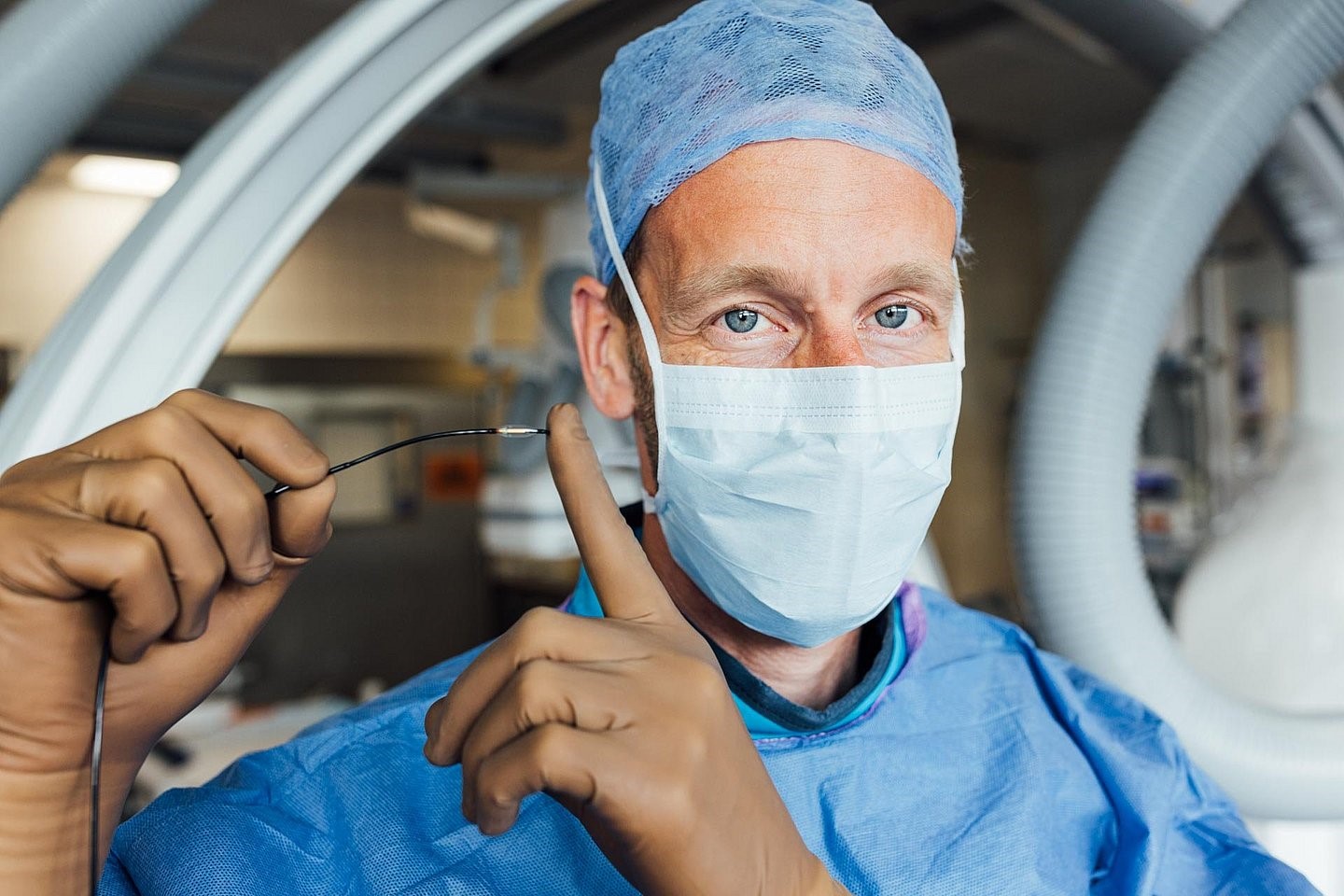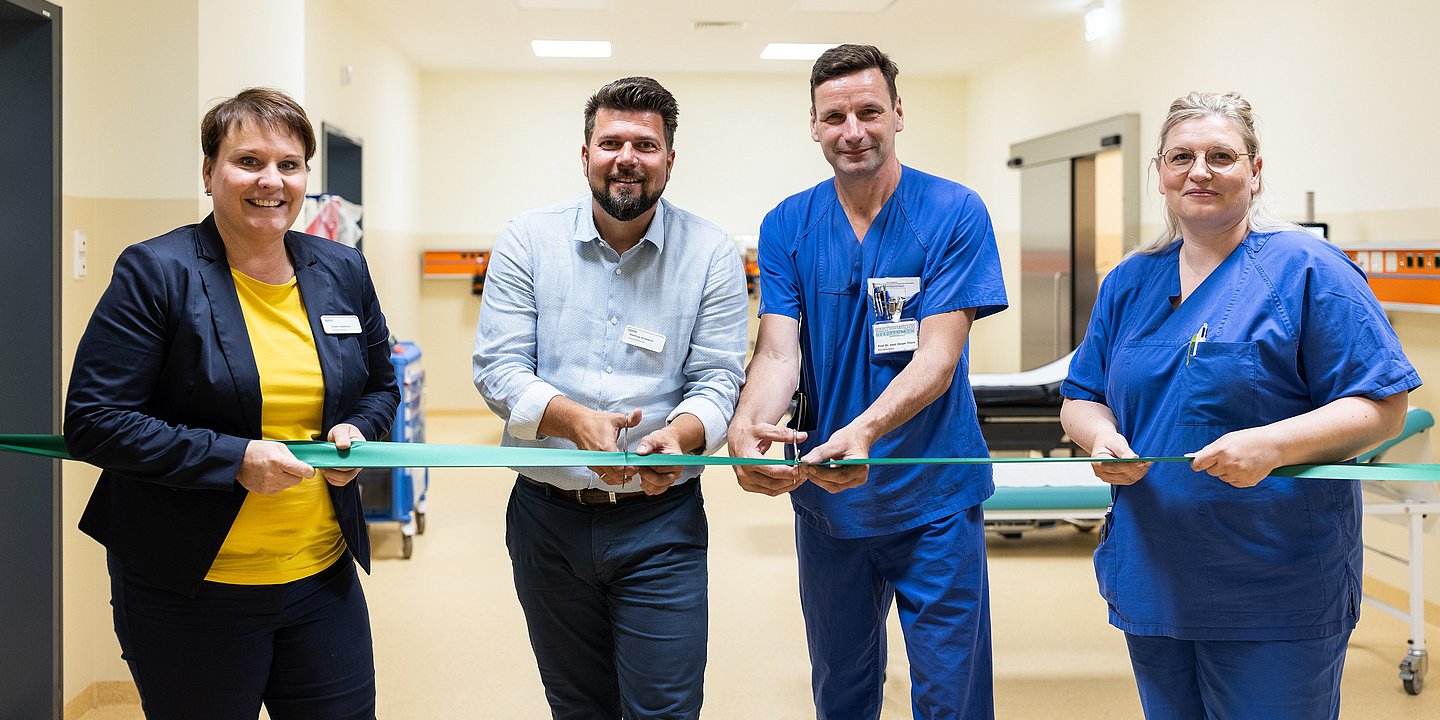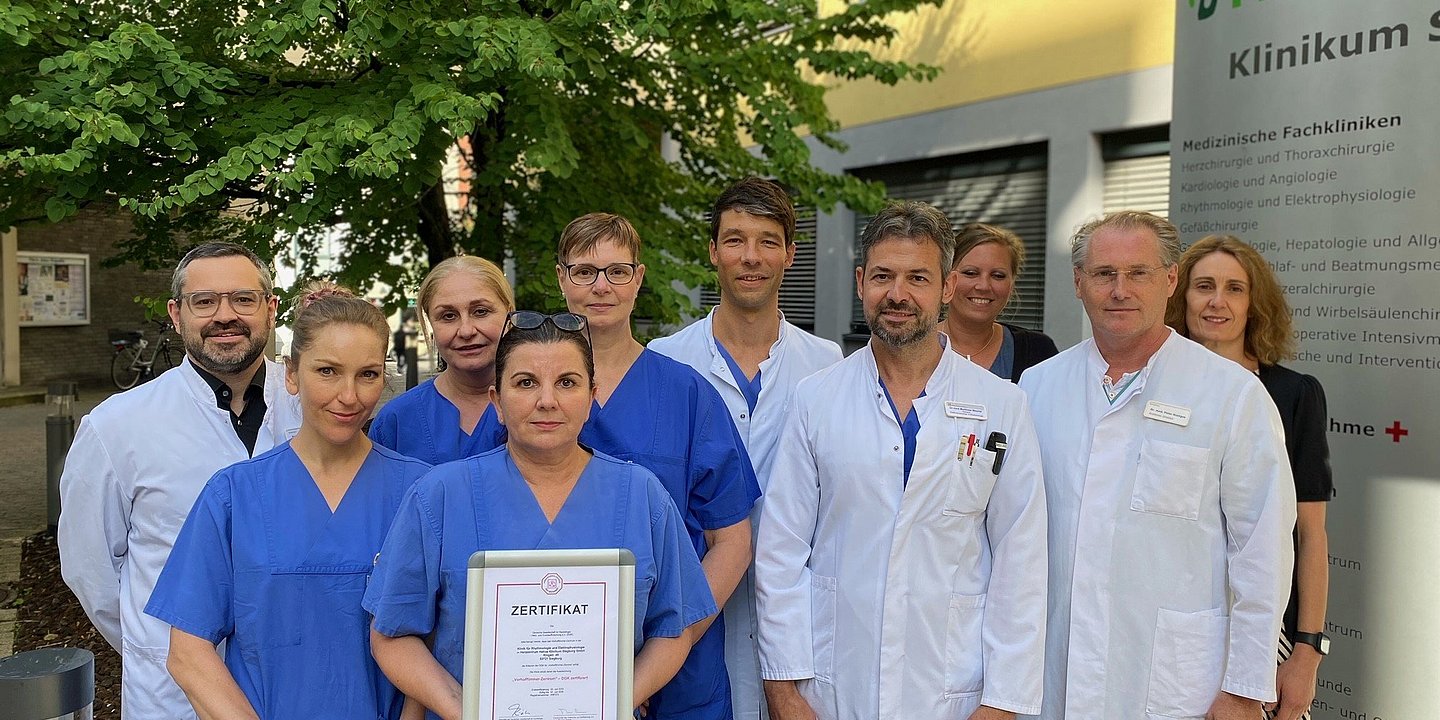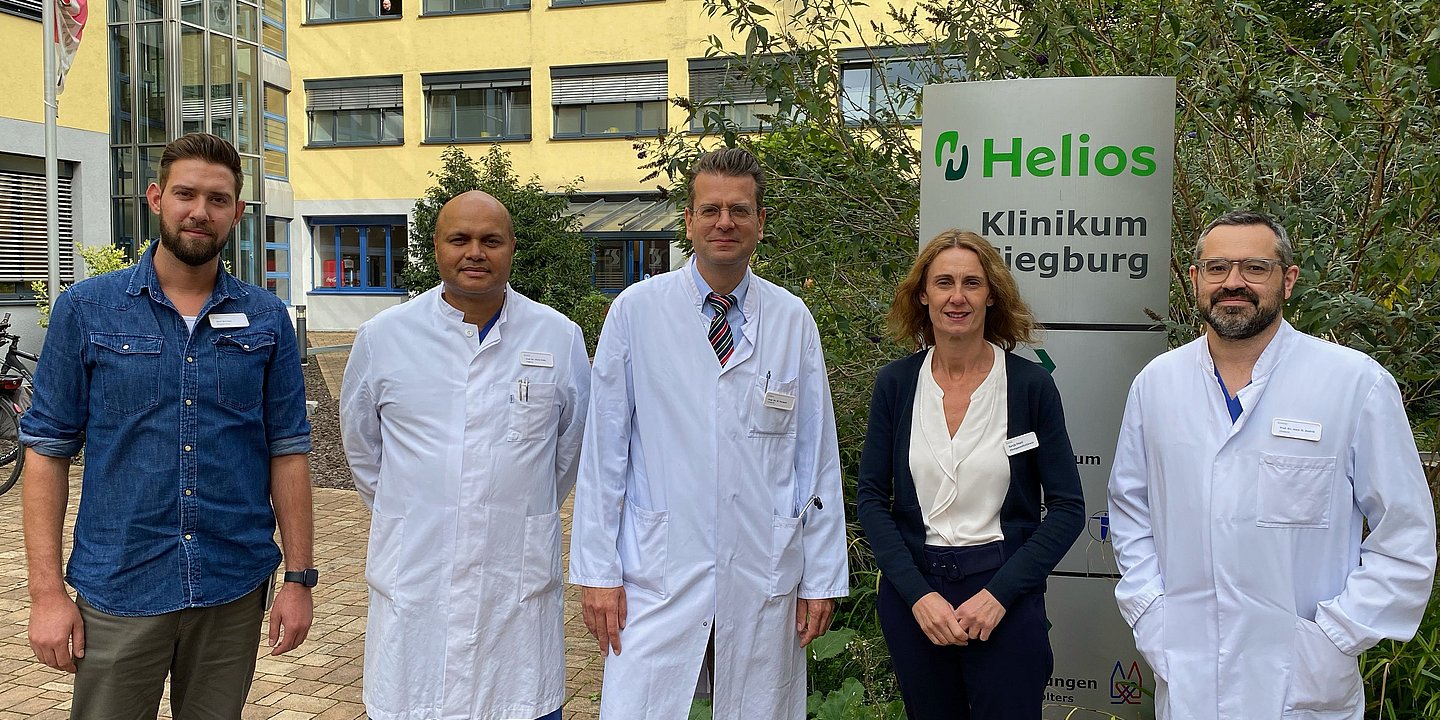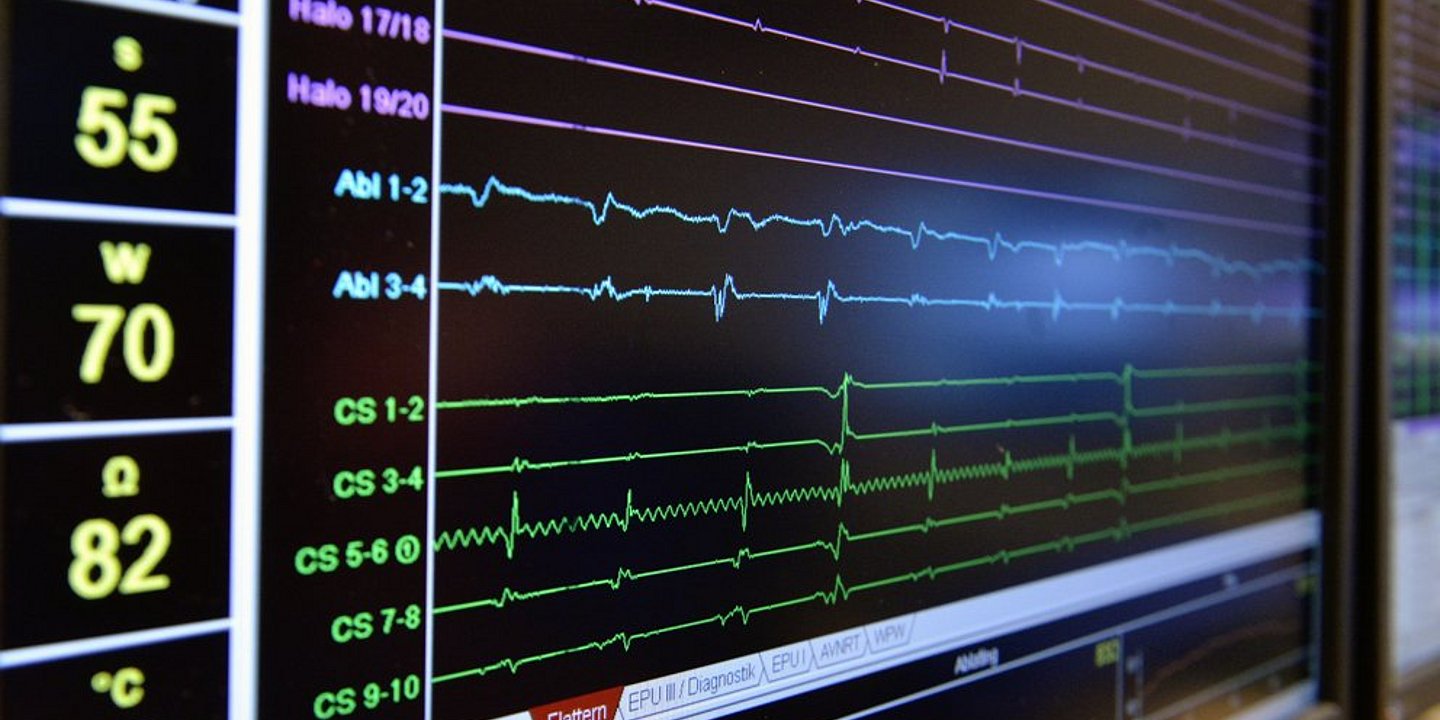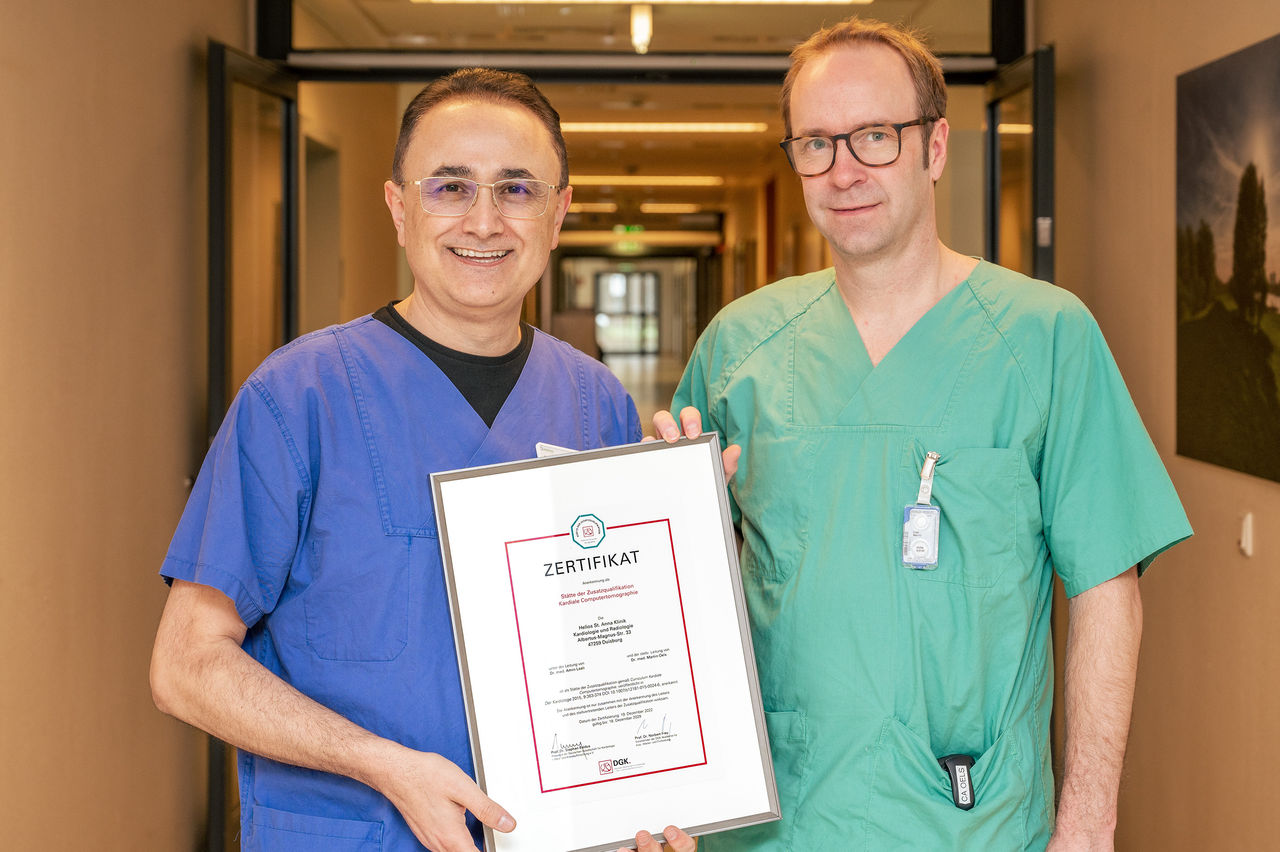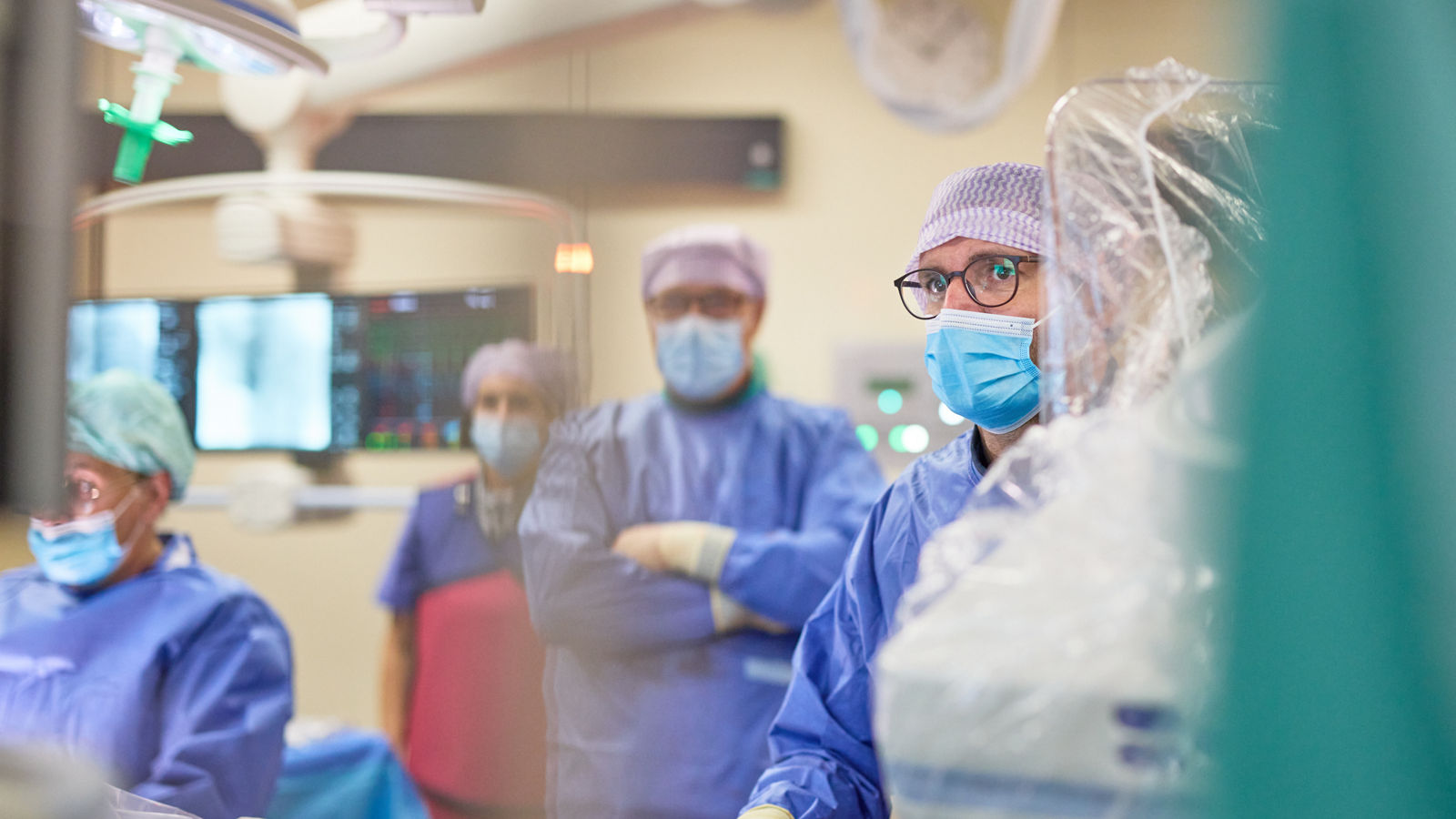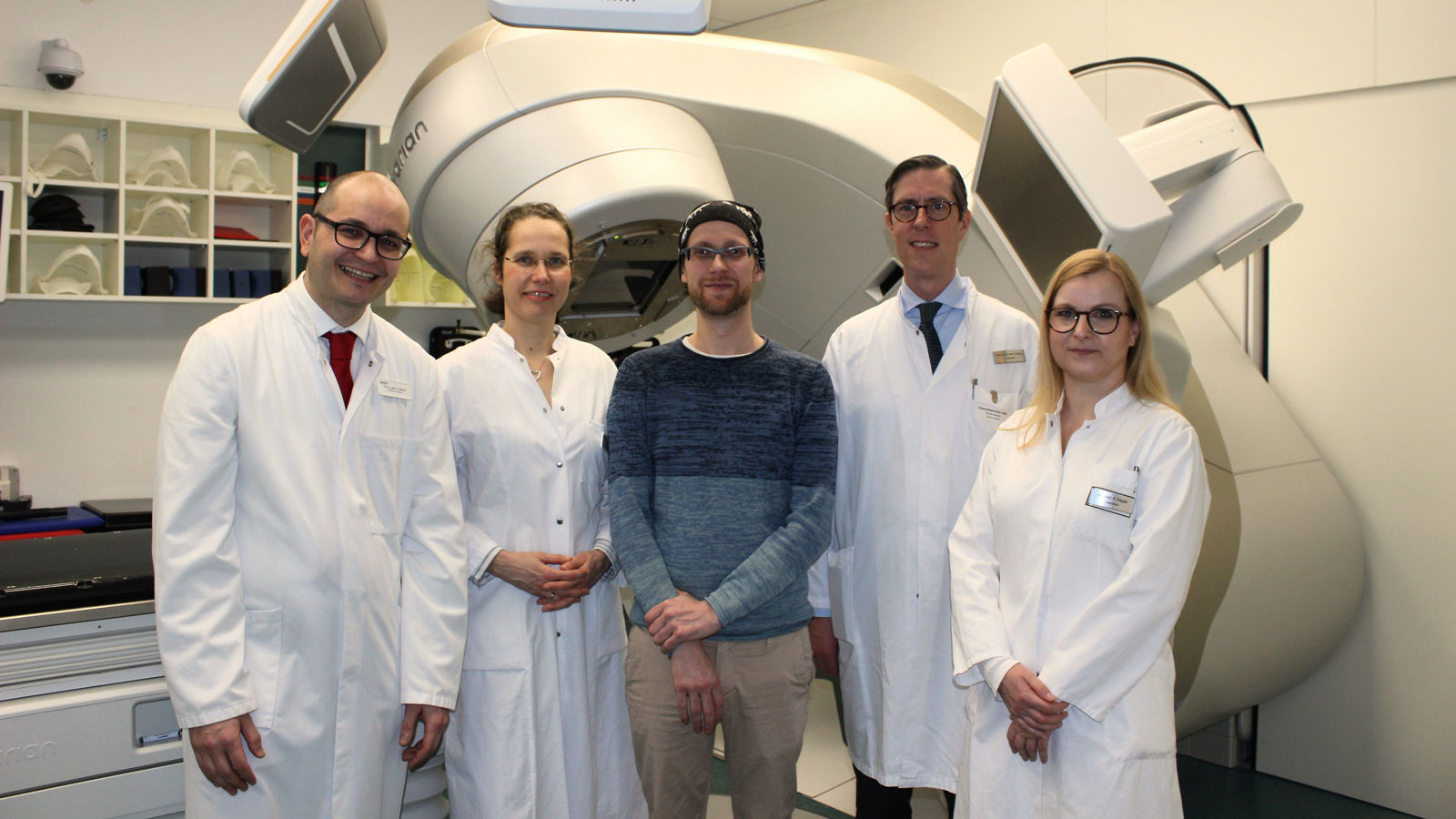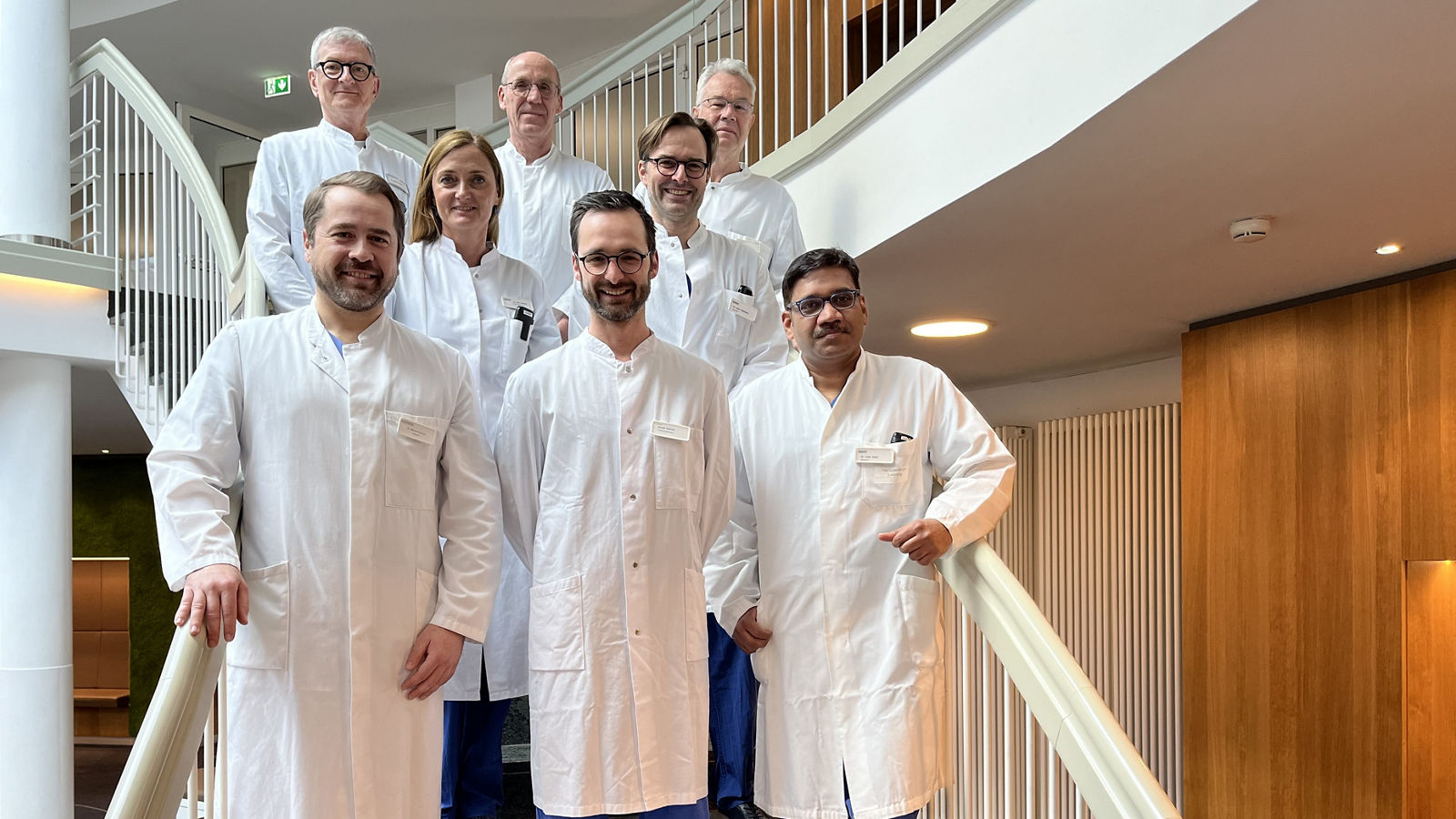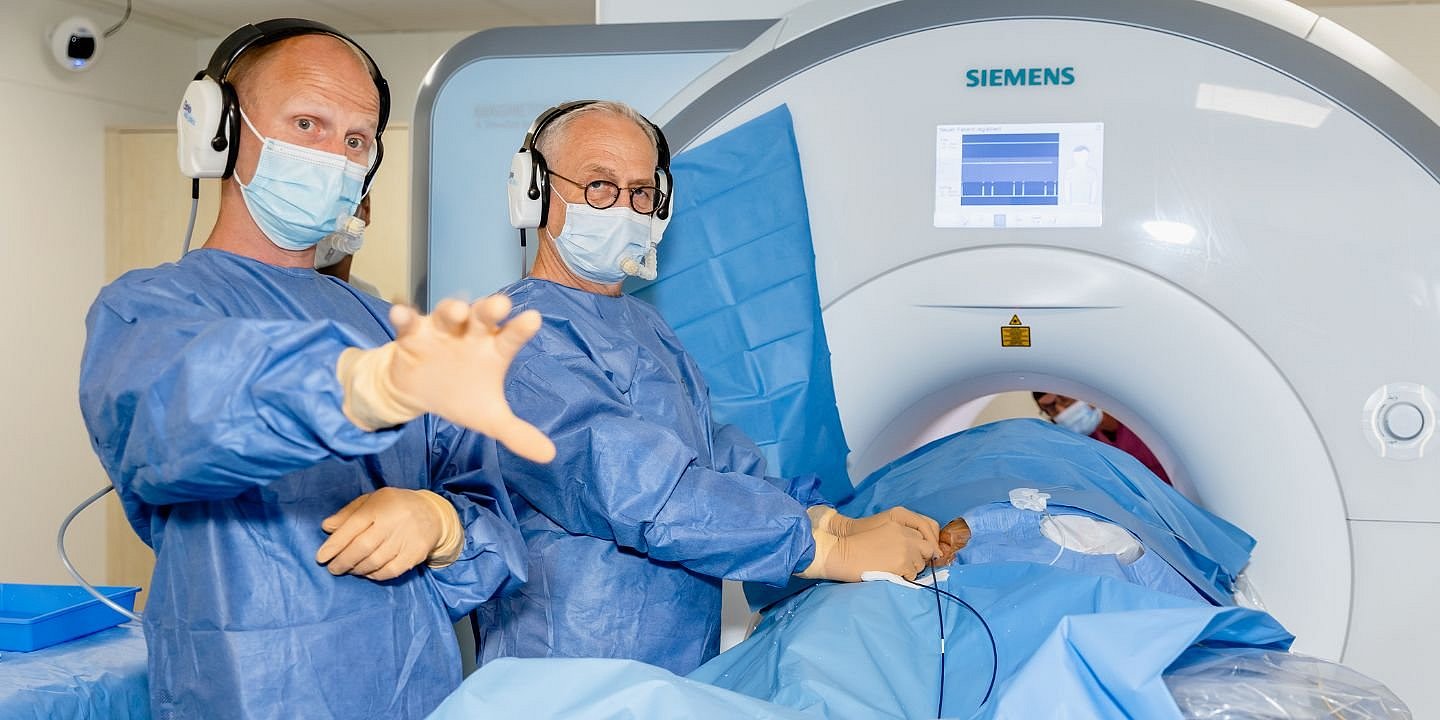
Cardiac MRI: Catheter ablation with MRI imaging performed for the first time in Berlin-Buch
At Helios Hospital Berlin-Buch, a catheter ablation was performed with the help of a cardiac MRI. For the first time, a team of cardiologists paired the standard procedure of catheter ablation with cardiac MRI. This new procedure promises to improve the treatment of complex cardiac arrhythmias in the future by providing real-time imaging and more precise treatment of cardiac tissue. The head of the Heart Rhythm Center Berlin/Brandenburg at Helios Hospital Berlin-Buch, Dr. med. Michael Wiedemann, explains the innovative procedure in an interview.
What are the requirements for this special procedure?
Dr. Wiedemann: "Due to our excellent experience in the team and interdisciplinary cooperation as well as our special equipment of a cardio-MRI and additional instruments, we were able to perform this MRI-assisted catheter ablation for the first time in Berlin. The surgical procedure with MRI imaging requires cardiac catheters that are not attracted to the magnetic MRI device. Therefore, we used catheters made of plastic with a gold tip and two electrodes, which were specially developed for this application. This makes us one of the first ten cardiology centers in Europe able to implement this method."
So what is cardio MRI?
Our state-of-the-art cardio-MRI is located on the garden floor of our hospital. This "cardiac MRI" makes real-time moving images of the heart's anatomy. The procedure is radiation-free and allows physicians to obtain very precise examination results, as the MRI images depict the individual structure and function of the heart very accurately. For example, special features such as complicated bulges in the tissue are depicted. In this specific case of MRI-based catheter ablation, we were able to precisely treat atrial flutter, a particular form of cardiac arrhythmia, in our patient and look at the MRI images during the procedure. My colleagues from our cardio-MRI department benefit greatly from the guidance of Prof. Jeanette Schulz-Menger, MD, who has already received several awards for her excellent research work," explains Michael Wiedemann, MD.
What is atrial flutter?
Dr. Wiedemann: "In typical atrial flutter, the electrical signal in the heart is disturbed. The signals get off track and "circle" in the right atrium. This so-called excitation circuit is the same in all patients. As a result, the atria can no longer pump properly: they "flutter" and are excited up to 300 times per minute. In Germany, the diagnosis of atrial flutter and especially atrial fibrillation is the second most common reason for hospitalization. Atrial flutter is usually treated by catheter ablation."
What is catheter ablation?
Dr. Wiedemann: "With few exceptions, a catheter ablation is the standard procedure for treating cardiac arrhythmias. Fluoroscopy with X-rays is normally used as the imaging procedure here and combined with a navigation procedure. In the minimally invasive procedure, catheters, flexible plastic tubes, are pushed through the inguinal vein to the heart and placed in the heart. Heat generated by radiofrequency current is used to selectively obliterate heart muscle tissue via the ablation catheter. Another method is sclerotherapy by cold. The sclerosed cells can no longer transmit the electrical signal and - as in our case of atrial flutter - the circular excitations are thus interrupted. The signal in the heart can be transmitted again in an orderly manner and the heart rhythm is intact again.
How many cardiac MRIs, catheter ablations and electrophysical examinations are performed on average each year at Helios Klinikum Berlin-Buch?
Dr. Wiedemann: "In our four highly specialized cardiology laboratories, we perform special catheter-based cardiac examinations for diagnostics and therapy. Two of these laboratories are specially equipped for the treatment of cardiac arrhythmias. Thus, about 1000 treatments such as ablations and electrophysical examinations are performed annually at Helios Klinikum Berlin-Buch. In our cardio-MRI under the direction of Prof. Dr. med. Jeanette Schulz-Menger, around 3000 hearts are also examined each year."
What advantages does this MRI-based catheter ablation procedure promise?
Dr. Wiedemann: "In the future, complex arrhythmias, especially life-threatening tachycardia, will be the focus of this treatment method. MRI imaging can not only depict anatomical features of the heart in real time, but also make scarring changes visible. Often, it is precisely these scars that give rise to very different, sometimes life-threatening cardiac arrhythmias. With the help of MRI, it should be possible to ensure optimal therapy planning and implementation. This is an important advantage over the classic "X-ray", fluoroscopy-assisted catheter ablation. Although other navigation systems for interventions on the heart already exist that enable 3D planning and are also used in surgery, they cannot display the treatment and results in real time as with MRI. In addition, the procedure does not produce any X-ray exposure for patients or medical staff. Further research and technical developments are needed to bring the above advantages into practice. We look forward to this interesting work."
What is meant by rhythmology?
Dr. Wiedemann: "Rhythmology is a specialty of cardiology and deals with the diagnosis and treatment of cardiac arrhythmias. Rhythmology is the science of electrical excitation in the heart. In order to detect and treat disturbances in this process, we use the ECG or a cardiac catheter examination. Standard therapies are then, for example, a catheter ablation for heart palpitations or a pacemaker for a too slow heartbeat. We perform the diagnostic examinations as well as the interventions in our state-of-the-art cardiac catheterization laboratories with all the technical requirements for special catheter-based cardiac examinations."
"My goal is to reach 100."
Gerd-Heiner Pippis (70) is cheerful after innovative procedure with heart MRI
After a routine checkup with his family doctor, Gerd-Heiner Pippis is sent to the hospital. The doctors from the Helios Klinikum Berlin-Buch diagnose a severe cardiac arrhythmia, a so-called atrial flutter. In this case, the sinus rhythm in the heart is out of sync and the electrical signal in the heart circles in the atria, causing them to flutter because the heart can no longer pump properly. At first, the retiree from Berlin-Buch is a bit shocked. "I never had any symptoms: no palpitations, no fainting spells," he says.
Cardiac MRI-assisted catheter ablation
Gerd-Heiner Pippis comes to the clinic at the right time. To get his heart "back in sync," he not only undergoes the standard procedure of catheter ablation, but a completely new procedure: ablation with simultaneous cardiac MRI. His attending physician, Michael Wiedemann, MD, head of the Heart Rhythm Center at Helios Klinikum-Berlin-Buch, explains the procedure. "MRI-guided catheter ablation enables very precise examination results, as the cardio-MRI images depict the individual structure of the heart very accurately. This means that even special features, such as a complicated tissue structure, can be depicted and taken into account during the procedure," the doctor explains. "This procedure could be performed by the Buch cardiologists for the first time in Berlin due to special surgical instruments. This makes us one of the first ten cardiology centers in Europe capable of implementing this method," adds Dr. Wiedemann.
Already the second heart operation
About seven years ago, ablation of the pulmonary veins was already successfully performed on patient Gerd-Heiner Pippis, which has not discouraged the native of Trier or prevented him from remaining active. After effective treatment of his "atrial flutter" with the help of MRI-assisted catheter ablation, Gerd-Heiner Pippis was able to ride his motorcycle home the very next day. "Now my sinus rhythm is fine and I can enjoy my life again." Now he feels really good: "My goal is to reach 100," says the outgoing 70-year-old.


